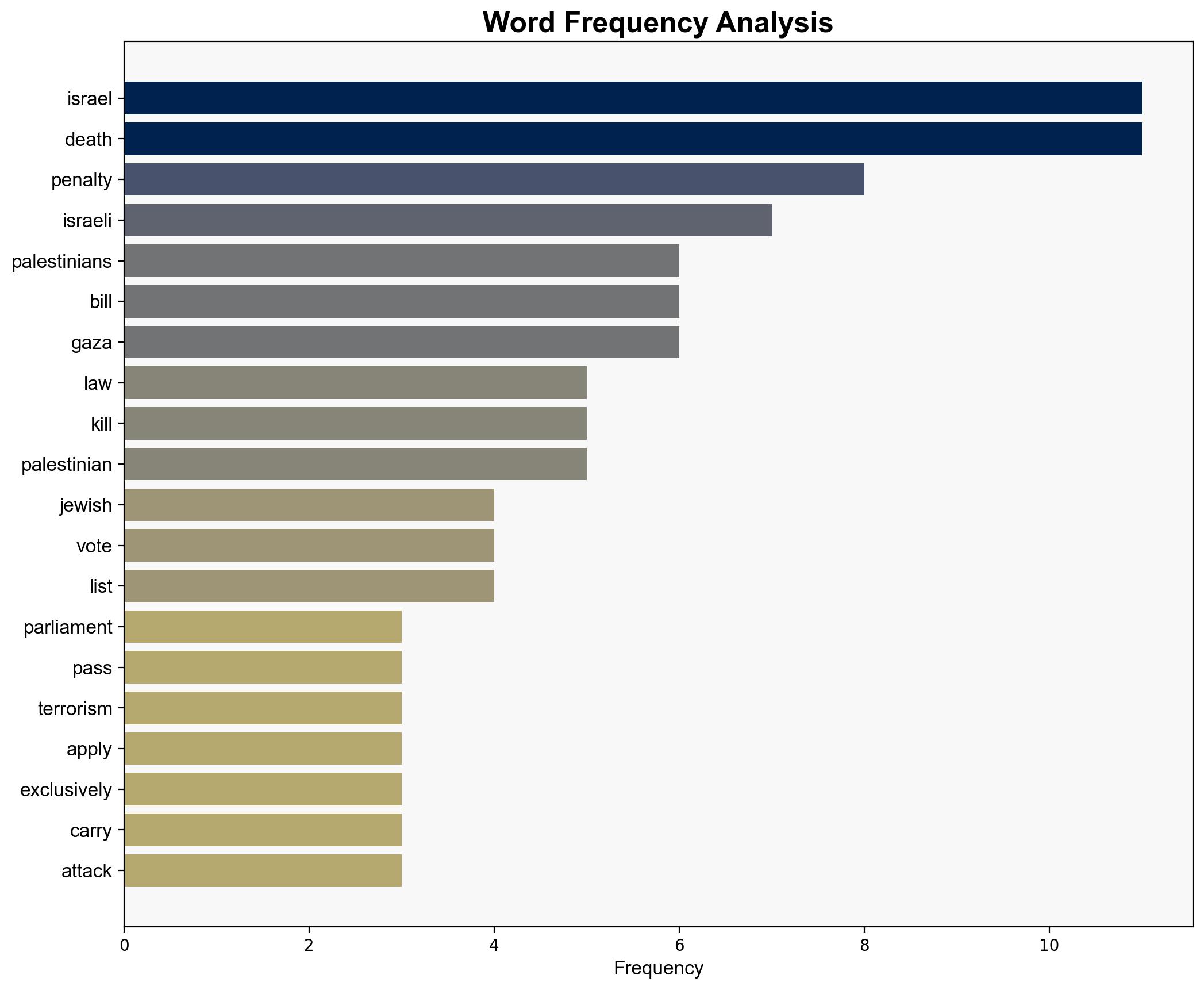Israeli parliament nods to bill to introduce death penalty for terrorism – Al Jazeera English
Published on: 2025-11-11
AI-powered OSINT brief from verified open sources. Automated NLP signal extraction with human verification. See our Methodology and Why WorldWideWatchers.
Intelligence Report: Israeli parliament nods to bill to introduce death penalty for terrorism – Al Jazeera English
1. BLUF (Bottom Line Up Front)
The Israeli parliament’s initial approval of a bill to introduce the death penalty for terrorism, primarily targeting Palestinians, signals a potential escalation in Israeli-Palestinian tensions. This move could exacerbate existing regional conflicts and provoke international condemnation. The most supported hypothesis is that the bill is intended to deter terrorism through severe punitive measures, but it risks deepening systemic discrimination and violating international law. Confidence Level: Moderate.
2. Competing Hypotheses
Hypothesis 1: The bill aims to deter terrorism by imposing severe consequences, thereby enhancing national security.
Hypothesis 2: The bill primarily serves as a political tool to consolidate power among right-wing factions by appealing to nationalist sentiments, potentially exacerbating discrimination against Palestinians.
Hypothesis 1 is more likely given the historical context of security measures in Israel; however, Hypothesis 2 cannot be dismissed due to the political dynamics and timing of the bill’s introduction.
3. Key Assumptions and Red Flags
Assumptions: The bill will be applied as stated, targeting only those with “racist motives” against Israelis. The Israeli judicial system will enforce the law impartially.
Red Flags: The bill’s language suggests potential for discriminatory application, primarily against Palestinians. Historical precedents of similar legislative attempts failing raise questions about the bill’s viability.
Deception Indicators: The framing of the bill as a security measure may mask underlying political motives.
4. Implications and Strategic Risks
The passage of this bill could lead to increased violence and retaliation from Palestinian groups, potentially destabilizing the region further. It may also strain Israel’s international relations, especially with countries advocating for human rights and international law adherence. Domestically, it could deepen societal divisions and fuel extremist narratives.
5. Recommendations and Outlook
- Engage in diplomatic dialogues with international partners to address potential human rights concerns and mitigate backlash.
- Monitor the bill’s progress and public reactions to anticipate and prepare for potential escalations.
- Best-case scenario: The bill acts as a deterrent without exacerbating tensions.
- Worst-case scenario: The bill leads to increased violence and international isolation.
- Most-likely scenario: The bill passes, leading to heightened tensions and international criticism.
6. Key Individuals and Entities
Itamar Ben Gvir, Benjamin Netanyahu, Erika Guevara Rosas, Amnesty International, Palestinian Ministry of Foreign Affairs.
7. Thematic Tags
Counter-Terrorism, Human Rights, Israeli-Palestinian Conflict, International Law
Structured Analytic Techniques Applied
- ACH 2.0: Reconstruct likely threat actor intentions via hypothesis testing and structured refutation.
- Indicators Development: Track radicalization signals and propaganda patterns to anticipate operational planning.
- Narrative Pattern Analysis: Analyze spread/adaptation of ideological narratives for recruitment/incitement signals.
Explore more:
Counter-Terrorism Briefs ·
Daily Summary ·
Methodology





